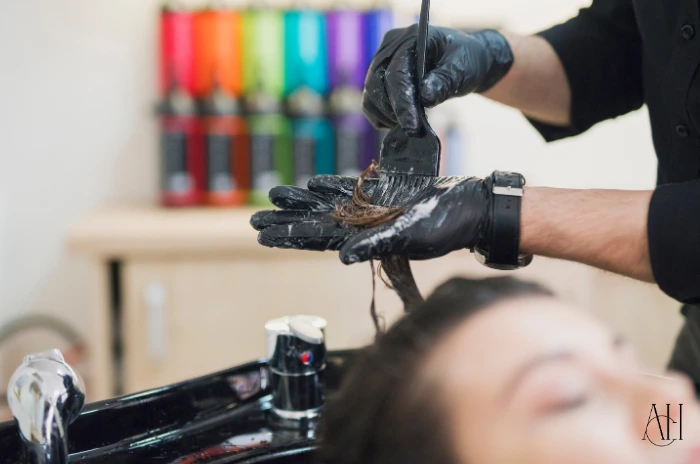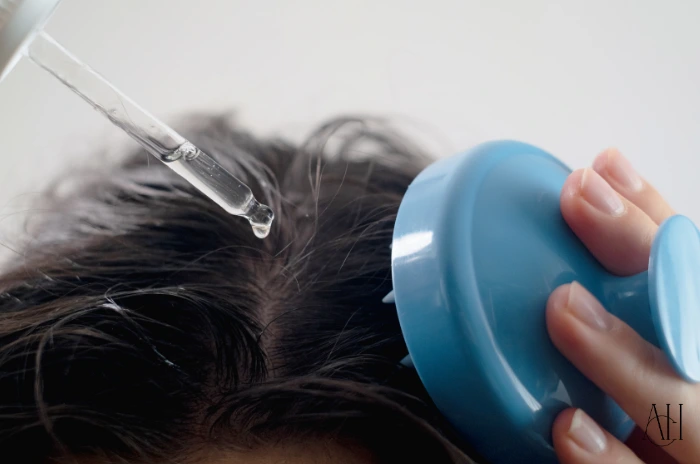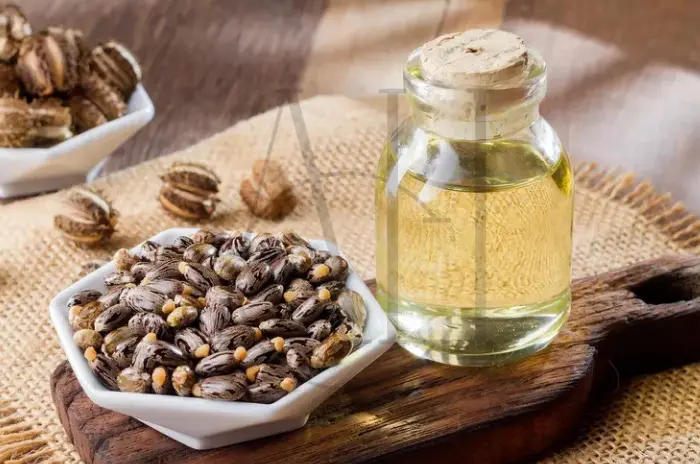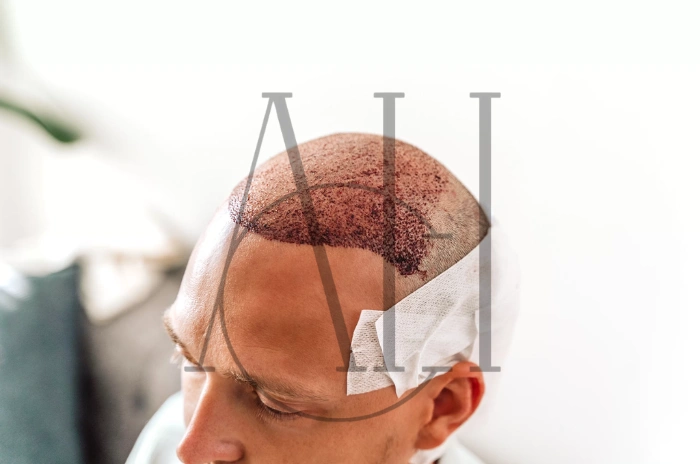Growing longer, healthier hair is a common desire for many people seeking to enhance their appearance and boost their confidence. While hair growth is largely determined by genetics, there are numerous proven strategies and techniques that can help optimize your hair’s natural growth potential. Understanding how fast does hair grow and implementing the right care routine can make a significant difference in achieving your hair goals.
The journey to faster hair growth requires patience, consistency, and the right approach to hair care. From proper nutrition and scalp stimulation to avoiding damaging practices, every aspect of your routine plays a crucial role. Whether you’re looking to grow hair faster naturally in a week or establish long-term healthy habits, this comprehensive guide will provide you with scientifically-backed methods to maximize your hair’s growth potential.
Table of Contents
ToggleHair facts: how fast does hair grow?
Understanding the natural hair growth cycle is essential for setting realistic expectations and developing an effective care routine. Here are the key facts about how fast does hair grow:
- Average growth rate: Hair grows approximately 0.5 inches (1.25 cm) per month
- Annual growth: This translates to about 6 inches (15 cm) per year
- Individual variation: How quickly hair grows can vary from 0.3 to 0.7 inches monthly
- Genetic factors: Your DNA largely determines your maximum growth potential
The hair growth cycle operates in three distinct phases that affect hair growth speed:
- Anagen phase (Growth): Lasts 2-7 years, determines maximum hair length
- Catagen phase (Transition): Brief 2-3 week period of follicle shrinkage
- Telogen phase (Rest): 3-month dormant period before hair sheds
- Growth activity: 85-90% of hair is actively growing at any given time
| Hair Growth Factor | Impact Level | Description |
|---|---|---|
| Genetics | High | Determines growth rate and maximum length potential |
| Age | High | Growth slows significantly after age 30 |
| Hormones | High | Testosterone, estrogen, and thyroid affect growth |
| Nutrition | Medium | Deficiencies can slow or halt growth |
| Health Status | Medium | Illness and medications can impact growth |
| Stress Levels | Medium | Chronic stress can trigger hair loss phases |
| Season | Low | Slight increase in summer months |
What helps hair grow?
Multiple factors contribute to healthy hair growth, and understanding what helps hair grow allows you to optimize your routine effectively:
Nutritional Factors:
- Protein intake: Hair is 95% protein (keratin), requiring adequate daily protein
- Iron levels: Essential for oxygen transport to follicles
- Biotin and B vitamins: Support cellular metabolism and keratin production
- Zinc and vitamin D: Crucial for follicle health and hormone regulation
- Omega-3 fatty acids: Provide anti-inflammatory benefits and scalp health
Scalp Health Elements:
- Proper circulation: Increased blood flow delivers nutrients to follicles
- Clean environment: Removes buildup that can clog follicles
- Balanced moisture: Prevents dryness and irritation that impede growth
- pH balance: Maintains optimal scalp condition for follicle function
- Regular massage: Stimulates circulation naturally
Hormonal Balance Factors:
- Thyroid function: Regulates metabolism and growth cycles
- Insulin sensitivity: Affects nutrient uptake and cellular function
- Stress hormones: Chronic elevation can trigger hair loss phases
- Sleep quality: Supports growth hormone production during rest
- Exercise routine: Improves circulation and hormone regulation
| Growth Supporting Nutrients | Daily Requirements | Best Food Sources |
|---|---|---|
| Protein | 0.8-1g per kg body weight | Lean meats, fish, eggs, legumes |
| Iron | 8-18mg (varies by gender/age) | Red meat, spinach, lentils |
| Biotin | 30-100mcg | Eggs, nuts, seeds |
| Zinc | 8-11mg | Oysters, pumpkin seeds, chickpeas |
| Vitamin D | 600-800 IU | Fatty fish, fortified foods |
| Omega-3 | 1-2g EPA/DHA | Salmon, walnuts, flax seeds |
Hair products for how to grow your hair faster
Selecting the right hair care products is crucial for anyone seeking to grow hair faster. Here are the most effective product categories and ingredients:
Growth-Stimulating Shampoos:
- Caffeine-infused formulas: Stimulate circulation and extend growth phase
- Biotin-enriched shampoos: Support keratin production and follicle health
- Ketoconazole shampoos: Reduce DHT buildup that can inhibit growth
- Sulfate-free options: Gentle cleansing without stripping natural oils
- pH-balanced formulas: Maintain optimal scalp environment
Targeted Hair Growth Supplements:
- Biotin supplements: 2,500-10,000 mcg daily for keratin support
- Collagen peptides: Provide amino acids for hair structure
- Iron supplements: Address deficiency-related slow growth
- Multivitamin complexes: Comprehensive nutritional support
- Omega-3 supplements: Support scalp health and reduce inflammation
Topical Growth Treatments:
- Minoxidil solutions: FDA-approved for hair regrowth
- Peptide serums: Stimulate follicle activity naturally
- Essential oil blends: Rosemary and peppermint for circulation
- Scalp exfoliants: Remove buildup that blocks follicles
- Growth factor serums: Advanced treatments for follicle stimulation
| Product Type | Key Ingredients | Application Frequency | Expected Results Timeline |
|---|---|---|---|
| Growth Shampoo | Caffeine, Biotin, Saw Palmetto | 3-4 times weekly | 8-12 weeks |
| Hair Supplements | Biotin, Iron, Collagen | Daily with meals | 12-16 weeks |
| Topical Serums | Minoxidil, Peptides | Daily application | 16-24 weeks |
| Essential Oils | Rosemary, Peppermint | 2-3 times weekly | 8-16 weeks |
| Scalp Treatments | AHAs, Salicylic Acid | Weekly | 4-8 weeks |
Tips for hair growth and preventing breakage
Don’t over-wash hair
Washing your hair too frequently can strip away natural oils that protect and nourish both your scalp and hair strands. Healthy scalp for hair growth requires maintaining a proper balance of natural sebum production. Most hair types benefit from washing every 2-3 days, though this can vary based on individual scalp condition and hair texture.
Over-washing can lead to dryness, irritation, and increased breakage, all of which hinder hair growth. When you do wash, focus the shampoo primarily on your scalp rather than the lengths of your hair. This approach cleanses effectively while minimizing damage to the more fragile ends of your hair strands.
Consider using dry shampoo between washes to absorb excess oil and extend the time between cleansing sessions. This practice helps maintain healthy scalp for hair growth while preventing the damage associated with daily washing routines.
Do supplement your diet if needed
Vitamins for hair growth can bridge nutritional gaps that might be limiting your hair’s potential. Common deficiencies that impact hair health include iron, vitamin D, biotin, and protein. A blood test can help identify specific deficiencies that might be addressed through targeted supplementation.
When considering supplements to grow hair faster, focus on those with proven efficacy and safety profiles. Biotin, collagen, and omega-3 fatty acids are among the most researched nutrients for hair health. However, remember that supplements work best when combined with a balanced diet rich in hair-supporting nutrients.
Quality matters when selecting vitamins for hair growth. Look for third-party tested products from reputable manufacturers, and avoid mega-doses that exceed recommended daily values. Consistency in taking supplements is more important than taking large amounts sporadically.
Do feed your hair from the inside out
Foods for hair growth should be a cornerstone of any hair improvement strategy. Protein-rich foods like lean meats, fish, eggs, and legumes provide the building blocks necessary for strong, healthy hair. Include a variety of colorful fruits and vegetables to ensure adequate vitamin and antioxidant intake.
Iron-rich foods are particularly important for hair growth, as iron deficiency is one of the most common causes of hair loss and slow growth. Include sources like spinach, red meat, lentils, and pumpkin seeds in your regular diet. Pairing iron-rich foods with vitamin C sources enhances absorption.
Healthy fats from sources like avocados, nuts, and olive oil support foods for hair growth by providing essential fatty acids that keep hair moisturized and flexible. These nutrients also support overall scalp health and can help reduce inflammation that might impede growth.
Do use products formulated for your hair type and condition
Understanding your specific hair type and current condition is essential for selecting products that will grow hair faster. Fine hair requires lightweight formulations that won’t weigh it down, while thick, coarse hair benefits from richer, more moisturizing products. Consider factors like porosity, curl pattern, and chemical processing history when making product choices.
Hair mask for hair growth treatments should be selected based on your hair’s specific needs. Protein masks benefit damaged or chemically-treated hair, while moisturizing masks work better for dry, brittle strands. Regular use of appropriate masks can significantly improve hair health and appearance.
Avoid products containing harsh sulfates, alcohols, or other potentially damaging ingredients if your goal is to grow hair faster. Instead, look for gentle, nourishing formulations that support the hair’s natural structure and promote healthy growth conditions.
Don’t skip regular trims
Regular trims are essential for maintaining healthy hair that can grow hair faster over time. While trimming doesn’t actually make hair grow faster, it removes split ends and prevents breakage that can make hair appear shorter and less healthy. Aim for trims every 6-8 weeks, or more frequently if your hair is damaged.
Prevent hair damage by addressing splits and breaks before they travel up the hair shaft. When left untreated, split ends can cause significant breakage that counteracts any growth you’ve achieved. Regular maintenance cuts help preserve length while maintaining healthy-looking hair.
Work with a skilled stylist who understands your hair growth goals and can provide minimal trims that remove only damaged ends. Communicate clearly about your objectives to ensure your stylist takes only what’s necessary for hair health.
Don’t over-style
Excessive heat styling and aggressive manipulation can significantly hinder your ability to grow hair faster. High temperatures from blow dryers, flat irons, and curling tools can damage the hair’s protein structure, leading to breakage and slower apparent growth. When heat styling is necessary, always use a heat protectant product and the lowest effective temperature.
Chemical treatments like frequent coloring, perming, or relaxing can also prevent hair damage when used excessively. If you choose to chemically process your hair, space treatments appropriately and invest in professional application to minimize damage risk.
Tight hairstyles that pull on the hair follicles can lead to traction alopecia and interfere with natural hair growth. Avoid consistently wearing tight ponytails, braids, or buns, especially when hair is wet and more vulnerable to damage.
Don’t fall for hair myths
Many popular beliefs about hair growth are not supported by scientific evidence and can sometimes be counterproductive. Myths like “frequent brushing stimulates growth” or “certain shampoos can double growth speed” can lead to unrealistic expectations and potentially harmful practices.
Understanding the science behind how to regrow hair helps you make informed decisions about which treatments and practices are worth your time and money. Focus on evidence-based approaches rather than following trends that promise miraculous results without scientific backing.
Research ingredients and techniques before incorporating them into your routine to grow hair faster. Reliable sources include peer-reviewed studies, dermatological publications, and recommendations from licensed professionals rather than unverified social media claims.
Don’t wash your hair with hot water
Hot water can strip away natural oils and cause the hair cuticle to lift, leading to moisture loss and increased fragility. This damage can slow apparent hair growth by increasing breakage and making hair appear thinner and less healthy. Use lukewarm water for washing and finish with a cool rinse to seal the cuticles.
The scalp is also sensitive to temperature extremes, and excessively hot water can cause irritation and dryness that may interfere with healthy scalp for hair growth. Maintaining proper scalp condition is crucial for creating an environment where follicles can function optimally.
Cool water rinses can actually benefit hair growth by improving circulation and helping to flatten the hair cuticle for increased shine and smoothness. This simple adjustment to your washing routine can make a noticeable difference in hair health over time.
Wear a hat and a sun protection product for hair
UV radiation from the sun can damage hair proteins and fade color, leading to dryness and breakage that interferes with hair growth. Just as you protect your skin from sun damage, your hair and scalp need protection during extended outdoor exposure. Wide-brimmed hats provide excellent coverage for both areas.
Prevent hair damage from environmental factors by using hair products that contain UV filters when spending time outdoors. Many leave-in conditioners and styling products now include sun protection specifically formulated for hair care needs.
The scalp is particularly vulnerable to sun damage, and sunburned scalp can temporarily disrupt normal hair growth cycles. Protecting this delicate skin helps maintain optimal conditions for healthy follicle function and consistent growth patterns.

What to avoid so you don’t sabotage hair growth
Certain practices and factors can significantly hinder your hair growth progress. Here’s what to avoid:
Hair dye
Chemical coloring can interfere with hair growth through several mechanisms:
- Protein damage: Bleaching and permanent dyes weaken hair shaft structure
- Increased porosity: Makes hair more vulnerable to breakage and moisture loss
- Scalp irritation: Harsh chemicals can inflame follicles and disrupt growth cycles
- Cumulative damage: Frequent coloring compounds structural weakness over time
- Processing stress: Multiple chemical treatments can cause significant breakage
Safer coloring alternatives:
- Semi-permanent or temporary colors that don’t penetrate the cortex
- Professional application with bond-building treatments
- Spacing treatments 8-12 weeks apart minimum
- Using deep conditioning treatments before and after coloring
- Choosing colors closer to your natural shade to minimize processing
Stress
Chronic stress significantly impacts hair growth through various physiological pathways:
- Hormonal disruption: Elevates cortisol levels that can trigger telogen effluvium
- Nutrient depletion: Stress increases nutritional needs while reducing absorption
- Sleep disruption: Poor sleep affects growth hormone production
- Inflammatory response: Chronic inflammation can damage follicles
- Behavioral impacts: Stress may lead to poor eating or hair-pulling habits
Stress management strategies:
- Regular exercise to reduce cortisol and improve circulation
- Meditation or mindfulness practices for mental wellness
- Adequate sleep (7-9 hours) for hormone regulation
- Social support and professional counseling when needed
- Time management to reduce daily stressors
Over-brush
Excessive brushing can cause significant damage that counteracts hair growth:
- Mechanical damage: Aggressive brushing tears hair cuticles and causes splits
- Wet hair vulnerability: Brushing wet hair when it’s 3x more fragile
- Traction damage: Pulling and tugging can damage follicles over time
- Tangling creation: Over-brushing can actually create more tangles
- Scalp irritation: Aggressive brushing can inflame the scalp
Proper brushing techniques:
- Use wide-tooth combs on wet hair only
- Start detangling from ends and work upward
- Limit brushing to styling needs, not arbitrary stroke counts
- Choose appropriate brush types for your hair texture
- Be extra gentle with chemically-treated or damaged hair
Rub your hair the wrong way
Improper drying and handling techniques damage hair and impede growth:
- Towel friction: Terry cloth creates excessive friction and cuticle damage
- Rough handling: Aggressive rubbing causes tangles and breakage
- Heat damage: Using high heat during drying weakens protein bonds
- Cuticle lifting: Rough treatment raises cuticles, leading to dryness
- Breakage points: Improper handling creates weak spots prone to snapping
| Damaging Practice | Hair Damage Type | Better Alternative |
|---|---|---|
| Terry cloth towel drying | Cuticle damage, tangles | Microfiber towel or cotton t-shirt |
| Aggressive brushing when wet | Stretching, breakage | Wide-tooth comb, gentle detangling |
| Daily heat styling | Protein damage, dryness | Air drying, lower heat settings |
| Tight hair ties | Traction damage | Silk scrunchies, loose styles |
| Sleeping on cotton | Friction, tangles | Silk/satin pillowcases |
Build a Hair-Care Routine for Growth
Use gentle hair washing and avoid overwashing
Establishing a washing schedule that supports hair growth requires balancing cleanliness with preserving natural oils. Most hair types benefit from washing every 2-3 days, though oily scalps may need more frequent cleansing while dry hair may require less. Pay attention to your scalp’s signals rather than following rigid schedules.
Healthy scalp for hair growth depends on proper cleansing technique as much as frequency. Focus shampoo application on the scalp and roots, where oil and product buildup occur most. Allow the suds to gently cleanse the lengths as you rinse, avoiding aggressive scrubbing that can cause tangles and damage.
Choose sulfate-free shampoos when possible to grow hair faster, as these gentler formulations clean effectively without stripping away beneficial oils. Look for ingredients like coconut-derived cleansers that provide effective cleaning while maintaining hair’s natural moisture balance.
Condition and moisturize your hair regularly
Regular conditioning is essential for maintaining hair health and supporting hair growth goals. Conditioner helps smooth the hair cuticle, reduces friction during styling, and provides moisture that keeps hair flexible and less prone to breakage. Apply conditioner from mid-length to ends, avoiding the scalp area.
Hair mask for hair growth treatments should be incorporated weekly or bi-weekly depending on your hair’s condition and needs. Deep conditioning masks provide intensive moisture and repair that regular conditioners can’t match, helping to maintain hair health as it grows longer.
Leave-in conditioners and hair oils can provide ongoing moisture and protection between wash days. These products help maintain the moisture balance necessary to prevent hair damage from environmental factors and daily manipulation.
Avoid heat styling and chemical treatments
Minimizing heat and chemical exposure is crucial for anyone serious about achieving faster hair growth. High temperatures from styling tools can damage the hair’s protein structure, leading to weakness and breakage that counteracts growth progress. When heat styling is necessary, use the lowest effective temperature and always apply heat protectant products.
Chemical treatments like perms, relaxers, and frequent coloring can significantly impact hair health and growth potential. If you choose to use these services, space them appropriately and work with experienced professionals who prioritize hair health alongside achieving desired results.
Hair repair tips for those who must use heat or chemicals include incorporating protein treatments, using intensive moisturizing masks, and being extra gentle with daily handling. The goal is to minimize cumulative damage that can interfere with hair growth progress.

Stimulate Your Scalp for Faster Hair Growth
Massage your scalp daily
Daily scalp massage is one of the most accessible and effective ways to support hair growth naturally. The increased blood circulation from massage brings more nutrients and oxygen to hair follicles, potentially extending the growth phase and encouraging healthier, faster growth. Spend 5-10 minutes daily using gentle circular motions with your fingertips.
How to regrow hair often involves improving circulation to dormant or sluggish follicles, and massage is an excellent way to achieve this without expensive treatments or products. The mechanical stimulation may also help remove buildup that could clog follicles and interfere with normal growth patterns.
Studies have shown that regular scalp massage can increase hair thickness and potentially improve growth rates. The key is consistency – daily massage sessions of even just a few minutes can be more beneficial than occasional longer sessions for stimulating hair growth.
Use essential oils like rosemary or peppermint
Essential oils like rosemary and peppermint have shown promise in research for supporting hair growth when used consistently. Rosemary oil has been found to be as effective as minoxidil in some studies, while peppermint oil can increase circulation and extend the growth phase of hair follicles.
When using essential oils to grow hair faster, always dilute them in a carrier oil like jojoba, coconut, or olive oil to prevent scalp irritation. A typical dilution ratio is 2-3 drops of essential oil per tablespoon of carrier oil. Apply this mixture to your scalp and massage gently before washing.
Hair repair tips include patch testing any new essential oil blend before full application and avoiding over-use, which can sometimes lead to sensitization. Start with once or twice weekly applications and adjust based on how your scalp responds to the treatment.
Try inversion techniques for circulation
Inversion techniques involve positioning your head below your heart to increase blood flow to the scalp, potentially supporting hair growth by bringing more nutrients to follicles. Simple methods include hanging your head off the edge of a bed or doing gentle forward bends while seated in a chair.
How fast does hair grow may be influenced by circulation levels, and inversion can be a simple way to temporarily boost blood flow to the scalp area. Some people combine inversion with scalp massage or oil treatments to maximize the potential benefits of increased circulation.
Practice inversion safely by starting with short sessions (1-2 minutes) and gradually increasing duration if comfortable. People with certain medical conditions should consult healthcare providers before trying inversion techniques, as the position changes can affect blood pressure and circulation.
Eat a Balanced Diet That Supports Hair Health
Add protein-rich foods to your meals
Protein is fundamental to hair growth since hair is primarily composed of keratin. Here’s how to optimize protein intake:
Complete Protein Sources:
- Animal proteins: Contain all essential amino acids for keratin production
- Lean meats: Beef, chicken, turkey provide high-quality protein and iron
- Fish and seafood: Salmon, tuna, sardines offer protein plus omega-3s
- Eggs: Complete amino acid profile plus biotin and sulfur
- Dairy products: Greek yogurt, cottage cheese for protein and calcium
Plant-Based Protein Options:
- Legumes: Lentils, chickpeas, black beans for protein and iron
- Quinoa: Complete protein grain with all essential amino acids
- Hemp seeds: Protein plus healthy fats and minerals
- Spirulina: High-protein algae with additional nutrients
- Protein combining: Pairing incomplete proteins for complete amino acid profiles
Daily Protein Requirements for Hair Growth:
- Minimum intake: 0.8g per kg of body weight
- Optimal for growth: 1.2-1.6g per kg for active individuals
- Meal distribution: Spread protein throughout the day for best utilization
- Timing: Include protein at each meal for consistent amino acid availability
Include vitamins like biotin, iron, and zinc
Essential vitamins for hair growth work synergistically to support healthy follicle function:
Iron – The Oxygen Carrier:
- Function: Transports oxygen to hair follicles for cellular metabolism
- Deficiency signs: Hair loss, slow growth, brittle texture
- Food sources: Red meat, spinach, lentils, pumpkin seeds
- Absorption tips: Pair with vitamin C, avoid with calcium or tea
- Daily needs: 8mg for men, 18mg for women of reproductive age
Biotin – The Growth Vitamin:
- Role: Essential for keratin synthesis and cellular energy production
- Benefits: Strengthens hair shaft, improves growth rate
- Sources: Eggs, nuts, seeds, sweet potatoes, avocados
- Supplementation: 30-100mcg daily, higher doses for deficiency
- Safety: Water-soluble vitamin with minimal toxicity risk
Zinc – The Repair Mineral:
- Functions: Protein synthesis, hormone regulation, immune support
- Hair benefits: Supports follicle health and prevents hair loss
- Food sources: Oysters, beef, pumpkin seeds, chickpeas
- Daily requirement: 8mg for women, 11mg for men
- Caution: Excessive intake can interfere with copper absorption
| Nutrient | Daily Requirement | Top Food Sources | Hair Growth Benefits |
|---|---|---|---|
| Protein | 1.2-1.6g/kg body weight | Lean meats, fish, eggs, legumes | Keratin production, hair strength |
| Iron | 8-18mg (gender dependent) | Red meat, spinach, lentils | Oxygen transport to follicles |
| Biotin | 30-100mcg | Eggs, nuts, seeds | Keratin synthesis, growth rate |
| Zinc | 8-11mg (gender dependent) | Oysters, seeds, chickpeas | Protein synthesis, hormone balance |
| Vitamin D | 600-800 IU | Fatty fish, fortified foods | Follicle health, cycle regulation |
| Omega-3 | 1-2g EPA/DHA | Salmon, walnuts, flax | Anti-inflammatory, scalp health |
Stay hydrated to support overall hair health
Proper hydration is essential for hair growth as it supports overall cellular function, including that of hair follicles. Dehydration can lead to dry, brittle hair that’s more prone to breakage, counteracting growth progress. Aim for adequate water intake based on your activity level and climate.
Healthy scalp for hair growth requires proper hydration to maintain the skin barrier and support normal sebum production. Dehydrated scalp can become flaky, itchy, or irritated, potentially interfering with optimal follicle function and growth cycles.
Beyond water, foods with high water content like fruits and vegetables contribute to overall hydration while providing additional nutrients that support hair growth. These foods also typically contain antioxidants that protect against oxidative stress that can damage follicles.
Use DIY Treatments and Products for Growth
Apply homemade hair masks with natural ingredients
Hair mask for hair growth treatments can be created using kitchen staples that provide nourishing benefits without expensive salon visits. Ingredients like eggs provide protein, avocado offers healthy fats and vitamins, and honey acts as a humectant to retain moisture. These natural treatments can support healthy hair that grows more effectively.
Popular DIY masks for hair growth include combinations like egg and olive oil for protein and moisture, or avocado and honey for deep conditioning. Apply these masks to damp hair, focusing on the mid-lengths and ends, and leave for 20-30 minutes before washing thoroughly.
Hair repair tips for DIY treatments include patch testing new ingredients and avoiding overuse of protein-rich masks, which can sometimes lead to stiffness if used too frequently. Balance protein treatments with moisturizing masks based on your hair’s current condition and needs.
Choose shampoos that promote hair growth
Best shampoo for hair growth typically contains active ingredients like biotin, caffeine, ketoconazole, or botanical extracts that support scalp health and circulation. Look for sulfate-free formulations that clean effectively without stripping natural oils necessary for healthy hair and scalp condition.
Caffeine-containing shampoos have shown promise in research for extending the growth phase of hair follicles and potentially counteracting some effects of hormonal hair loss. These products work by stimulating circulation and may help grow hair faster when used consistently over time.
Healthy scalp for hair growth benefits from shampoos that maintain proper pH balance and don’t cause irritation or excessive dryness. Read ingredient lists carefully and avoid products with harsh sulfates, alcohols, or other potentially irritating components that could interfere with optimal scalp condition.
Use silk pillowcases to reduce breakage while sleeping
Silk pillowcases create less friction against hair during sleep, helping to prevent hair damage and breakage that can counteract growth progress. The smooth surface allows hair to glide rather than catch and tangle, particularly beneficial for those with longer hair or fragile, chemically-treated strands.
Hair repair tips for nighttime protection also include loosely braiding long hair or using silk scrunchies instead of elastic bands that can create pressure points and breakage. The goal is to minimize tension and friction that occurs during normal sleep movement.
Satin pillowcases or bonnets can provide similar benefits to silk at a lower cost while still supporting efforts to grow hair faster. The key is reducing friction and moisture loss that can occur with traditional cotton pillowcases that have rougher surfaces.
Make Nutrition a Key Part of Hair Growth
Eat a balanced, protein-rich diet
A well-balanced diet forms the foundation for successful hair growth by providing all the nutrients follicles need to function optimally. Beyond protein, hair health requires adequate vitamins, minerals, healthy fats, and carbohydrates to support the energy-intensive process of creating new hair cells.
Foods for hair growth should include a variety of nutrient-dense options rather than focusing on single “superfoods.” Colorful fruits and vegetables provide antioxidants that protect against cellular damage, while whole grains offer B vitamins essential for energy metabolism in rapidly dividing hair follicle cells.
Meal planning can help ensure consistent intake of nutrients that support hair growth. Include protein sources at each meal, add healthy fats like nuts or olive oil, and incorporate plenty of fruits and vegetables to create a diet that supports optimal hair health and growth potential.
Take supplements if you’re lacking nutrients
Vitamins for hair growth supplements can be beneficial when dietary intake is insufficient or when specific deficiencies are identified through blood testing. Common supplements include biotin, iron, vitamin D, and specialized hair growth complexes that combine multiple nutrients in appropriate ratios.
Before starting any supplement regimen to grow hair faster, consider having blood work done to identify actual deficiencies rather than guessing at what you might need. Over-supplementation can sometimes be counterproductive and may interfere with absorption of other nutrients.
Quality matters when selecting vitamins for hair growth. Choose third-party tested products from reputable manufacturers, and follow dosing instructions carefully. Remember that supplements work best as part of an overall healthy lifestyle rather than as quick fixes for poor diet or care habits.
Stay hydrated throughout the day
Consistent hydration supports hair growth by maintaining optimal cellular function and supporting the transport of nutrients to hair follicles. Dehydration can slow metabolic processes and reduce the efficiency of nutrient delivery to growing hair, potentially impacting growth rate and hair quality.
Healthy scalp for hair growth requires adequate moisture to maintain the skin barrier and support normal function. Well-hydrated scalp is less likely to become flaky, itchy, or irritated, conditions that can potentially interfere with normal hair growth cycles.
Monitor your hydration status by observing urine color and paying attention to thirst cues. In addition to water, herbal teas and water-rich foods contribute to overall hydration while providing additional nutrients that may support hair growth and overall health.
FAQ : How to Make Your Hair Grow Faster
How fast does hair typically grow, and what factors influence its growth rate?
Hair typically grows about half an inch per month or six inches per year, though genetics, age, hormones, nutrition, and overall health significantly influence individual growth rates.
What nutrients and foods are essential for promoting faster hair growth?
Essential nutrients include protein for keratin production, iron for oxygen transport, biotin for cellular metabolism, zinc for protein synthesis, and vitamins for hair growth like vitamin D and omega-3 fatty acids from foods like fish, eggs, and leafy greens.
Which hair care products are most effective in accelerating hair growth?
The best shampoo for hair growth contains ingredients like biotin, caffeine, or ketoconazole, while topical treatments with minoxidil or natural oils like rosemary can stimulate follicles when used consistently.
What daily habits can help prevent hair breakage and support hair growth?
Daily habits that prevent hair damage include gentle detangling, using silk pillowcases, avoiding tight hairstyles, protecting hair from UV damage, and maintaining a consistent care routine with appropriate products.
How often should I wash my hair to optimize its growth?
Most hair types benefit from washing every 2-3 days to maintain a healthy scalp for hair growth while preserving natural oils, though individual needs vary based on scalp condition and hair texture.
Are there specific hairstyles or treatments that can hinder hair growth?
Tight hairstyles causing tension, excessive heat styling, frequent chemical processing, and aggressive brushing can all hinder hair growth by causing breakage and follicle damage.
What common practices should be avoided to prevent sabotaging hair growth?
Avoid overwashing, using hot water, excessive heat styling, tight hairstyles, harsh brushing when wet, and falling for unproven hair myths that may lead to damaging practices.
Can stress and lifestyle choices significantly impact hair growth speed?
Yes, chronic stress can disrupt hormonal balance and trigger hair loss conditions, while poor sleep, inadequate nutrition, and unhealthy lifestyle choices can all negatively impact hair growth rates and quality.




